-
 Bitcoin
Bitcoin $111300
-0.83% -
 Ethereum
Ethereum $4296
-0.28% -
 XRP
XRP $2.970
-0.28% -
 Tether USDt
Tether USDt $0.0000
0.01% -
 BNB
BNB $876.7
-0.13% -
 Solana
Solana $216.7
0.50% -
 USDC
USDC $0.9998
0.01% -
 Dogecoin
Dogecoin $0.2424
1.50% -
 TRON
TRON $0.3345
0.88% -
 Cardano
Cardano $0.8635
0.03% -
 Hyperliquid
Hyperliquid $53.38
5.54% -
 Chainlink
Chainlink $23.07
0.27% -
 Ethena USDe
Ethena USDe $1.001
0.02% -
 Sui
Sui $3.463
-0.21% -
 Stellar
Stellar $0.3738
-0.33% -
 Bitcoin Cash
Bitcoin Cash $578.5
-1.51% -
 Avalanche
Avalanche $26.00
2.07% -
 Hedera
Hedera $0.2276
0.77% -
 UNUS SED LEO
UNUS SED LEO $9.548
0.02% -
 Cronos
Cronos $0.2597
2.73% -
 Litecoin
Litecoin $112.0
-0.64% -
 Toncoin
Toncoin $3.089
-0.29% -
 Shiba Inu
Shiba Inu $0.00001285
-0.10% -
 Polkadot
Polkadot $4.098
1.54% -
 Uniswap
Uniswap $9.484
-0.88% -
 Ethena
Ethena $0.8361
8.06% -
 Dai
Dai $0.9998
0.01% -
 Monero
Monero $269.5
-0.68% -
 World Liberty Financial
World Liberty Financial $0.1994
-4.02% -
 Aave
Aave $299.1
-1.29%
Can VWAP predict the closing price What is the significance of the end-of-day deviation value
VWAP is a key tool in crypto trading, helping assess if assets are overbought or oversold, but it's a lagging indicator and doesn't predict closing prices directly.
May 21, 2025 at 05:00 pm
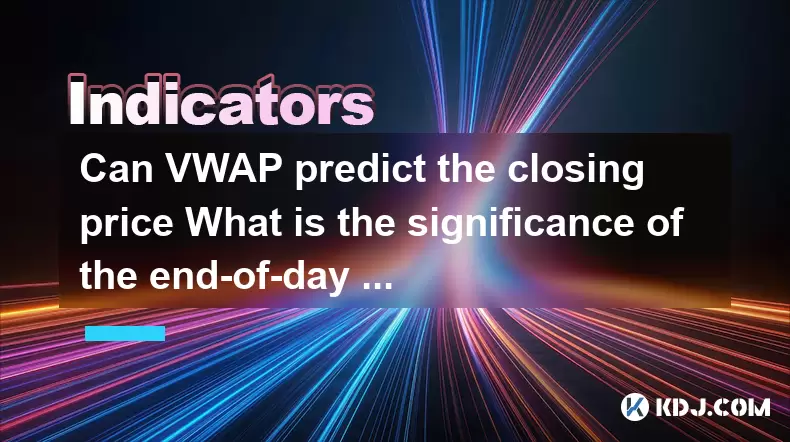
Understanding VWAP and Its Application in Cryptocurrency Trading
The Volume Weighted Average Price (VWAP) is a trading benchmark used by investors to determine the average price of a security over a specified period, weighted by the volume traded at each price level. In the realm of cryptocurrency, where market volatility is high and price movements can be swift, VWAP serves as a critical tool for traders looking to make informed decisions.
VWAP is calculated by taking the total dollar amount of all trades and dividing it by the total trading volume for the period. In simpler terms, it provides a fair value metric that traders can use to assess whether a cryptocurrency is currently overbought or oversold. By comparing the current market price to the VWAP, traders can gauge the market sentiment and make strategic trading decisions.
Can VWAP Predict the Closing Price?
The question of whether VWAP can predict the closing price of a cryptocurrency is nuanced. VWAP does not directly predict the closing price, but it can offer valuable insights that traders can use to make educated guesses about future price movements.
The primary utility of VWAP in predicting closing prices lies in its ability to indicate the general direction of the market throughout the trading day. If the current price is consistently above the VWAP, it suggests bullish momentum, and traders might anticipate a higher closing price. Conversely, if the price is below the VWAP, it indicates bearish sentiment, potentially leading to a lower closing price.
However, VWAP is more of a descriptive rather than a predictive tool. It reflects the average price at which the asset has traded during the period, but it does not account for external factors such as news events, regulatory changes, or broader market trends that can significantly impact the closing price. Therefore, while VWAP can provide a framework for understanding price movements, it should be used in conjunction with other technical and fundamental analysis tools to improve predictive accuracy.
The Significance of the End-of-Day Deviation Value
The end-of-day deviation value, often referred to as the deviation from VWAP, is a critical metric for traders as it quantifies how far the closing price of a cryptocurrency deviates from its VWAP. This deviation can provide insights into the strength of the market's closing momentum and the potential for price reversal.
A positive deviation from VWAP at the end of the day indicates that the closing price was higher than the average price throughout the day, suggesting strong buying pressure. This could signal that the bullish trend might continue into the next trading session. On the other hand, a negative deviation suggests that the closing price was lower than the average, indicating selling pressure and potential bearish continuation.
Understanding the end-of-day deviation value is crucial for traders looking to capitalize on short-term price movements. For instance, if a cryptocurrency closes significantly above its VWAP, a trader might consider taking a long position, anticipating further upward movement. Conversely, a significant negative deviation might prompt a trader to short the asset, expecting a downward correction.
Practical Application of VWAP in Cryptocurrency Trading
To effectively use VWAP in cryptocurrency trading, traders must understand how to calculate and interpret this metric. Here’s a step-by-step guide on how to apply VWAP in your trading strategy:
Calculate VWAP: Use trading data from your chosen cryptocurrency exchange to compute the VWAP. This involves summing the product of the price and volume for each trade and dividing by the total volume. Many trading platforms offer built-in VWAP indicators, which can simplify this process.
Compare Current Price to VWAP: Monitor the current price of the cryptocurrency relative to its VWAP. If the price is above the VWAP, it may be a good time to buy, as the market is bullish. If the price is below the VWAP, it might be a signal to sell or short the asset.
Assess End-of-Day Deviation: At the end of the trading day, calculate the deviation from VWAP. A large positive deviation could indicate strong bullish momentum, while a large negative deviation might suggest bearish momentum.
Incorporate Other Indicators: Use VWAP in conjunction with other technical indicators, such as moving averages, RSI, and MACD, to form a more comprehensive trading strategy. This multi-faceted approach can help validate your trading decisions and improve accuracy.
Limitations of VWAP in Cryptocurrency Markets
While VWAP is a powerful tool, it is not without its limitations, especially in the volatile and often unpredictable cryptocurrency markets. VWAP is most effective in markets with high liquidity and volume, which may not always be the case for smaller or less popular cryptocurrencies. In low-volume markets, VWAP can be skewed by large trades, leading to inaccurate readings.
Additionally, VWAP is a lagging indicator, meaning it is based on past data and does not account for real-time market changes. This can be a significant drawback in the fast-paced world of cryptocurrency trading, where prices can change rapidly due to news events or market sentiment shifts.
Furthermore, VWAP does not consider external factors such as regulatory announcements, technological developments, or macroeconomic trends that can heavily influence cryptocurrency prices. Traders must remain aware of these factors and adjust their strategies accordingly.
Case Studies: VWAP in Action
To illustrate the practical application of VWAP in cryptocurrency trading, let’s examine a couple of case studies:
Case Study 1: Bitcoin (BTC): Suppose a trader is monitoring Bitcoin's price throughout the day. At 2 PM, the current price of BTC is $30,000, while the VWAP for the day is $29,500. The positive deviation suggests bullish momentum, and the trader decides to enter a long position. By the end of the day, BTC closes at $30,500, a significant positive deviation from the VWAP, confirming the trader’s decision.
Case Study 2: Ethereum (ETH): In another scenario, a trader observes that Ethereum's price is consistently below its VWAP throughout the day. At 4 PM, the current price is $2,000, while the VWAP is $2,100. The negative deviation indicates bearish momentum, and the trader enters a short position. By the end of the day, ETH closes at $1,950, validating the trader’s strategy.
These case studies demonstrate how VWAP can be used to make informed trading decisions based on the deviation from the average price.
Frequently Asked Questions
Q1: How often should I recalculate VWAP during the trading day?A1: The frequency of recalculating VWAP depends on your trading strategy and the time frame you are using. For intraday trading, recalculating VWAP every 15 to 30 minutes can provide more granular insights into price movements. For longer-term trading, daily or weekly VWAP calculations may be sufficient.
Q2: Can VWAP be used for all cryptocurrencies, or are there specific types where it is more effective?A2: VWAP can be applied to any cryptocurrency, but it is most effective for assets with high liquidity and trading volume. For less liquid cryptocurrencies, VWAP might be less reliable due to the potential for price manipulation by large trades.
Q3: How can I integrate VWAP with other trading indicators to enhance my strategy?A3: Integrating VWAP with other indicators can enhance your trading strategy by providing a more comprehensive view of market conditions. For instance, you can use VWAP in conjunction with the Relative Strength Index (RSI) to identify overbought or oversold conditions. If the price is above VWAP and the RSI is above 70, it might indicate a potential reversal, prompting you to take profits or enter a short position.
Q4: Are there any specific tools or software recommended for calculating VWAP in cryptocurrency trading?A4: Many cryptocurrency trading platforms, such as Binance and Coinbase Pro, offer built-in VWAP indicators. Additionally, third-party charting software like TradingView and MetaTrader 4 (MT4) provide VWAP tools that can be customized to suit your trading needs. These platforms often allow you to overlay VWAP on price charts, making it easier to monitor and interpret.
Disclaimer:info@kdj.com
The information provided is not trading advice. kdj.com does not assume any responsibility for any investments made based on the information provided in this article. Cryptocurrencies are highly volatile and it is highly recommended that you invest with caution after thorough research!
If you believe that the content used on this website infringes your copyright, please contact us immediately (info@kdj.com) and we will delete it promptly.
- BlackRock, Bitcoin ETF, and the Next BTC Move: What's Driving the Market?
- 2025-09-10 04:25:13
- Play-to-Earn, Crypto Games, and the Web3 Future: A New Yorker's Take
- 2025-09-10 04:25:13
- Meme Coins: Explosive Gains in 2025? What You Need to Know
- 2025-09-10 04:30:12
- EigenLayer (EIGEN): Exchange Listings Fuel Rally Amidst Technical Crosscurrents
- 2025-09-10 04:30:12
- Crypto Coins in September 2025: Navigating Investment Opportunities
- 2025-09-10 04:35:13
- Bitcoin Price, JPMorgan, and CPI Data: Decoding the Crypto Market's Next Move
- 2025-09-10 04:35:13
Related knowledge
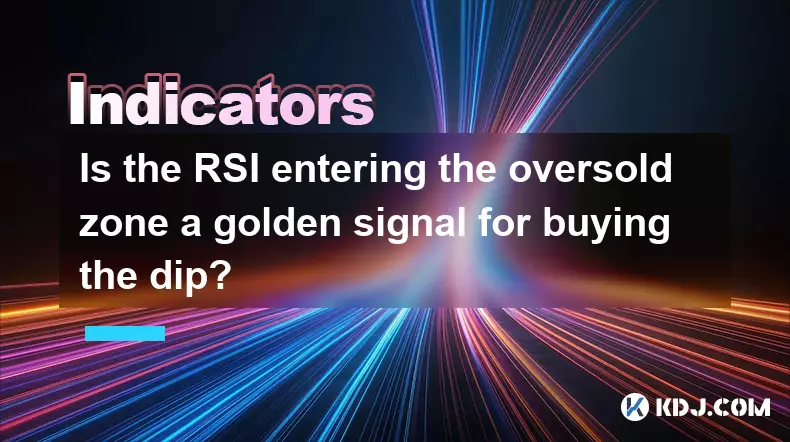
Is the RSI entering the oversold zone a golden signal for buying the dip?
Sep 09,2025 at 02:55pm
Understanding the RSI and Its Role in Crypto Trading1. The Relative Strength Index (RSI) is a momentum oscillator widely used in the cryptocurrency ma...
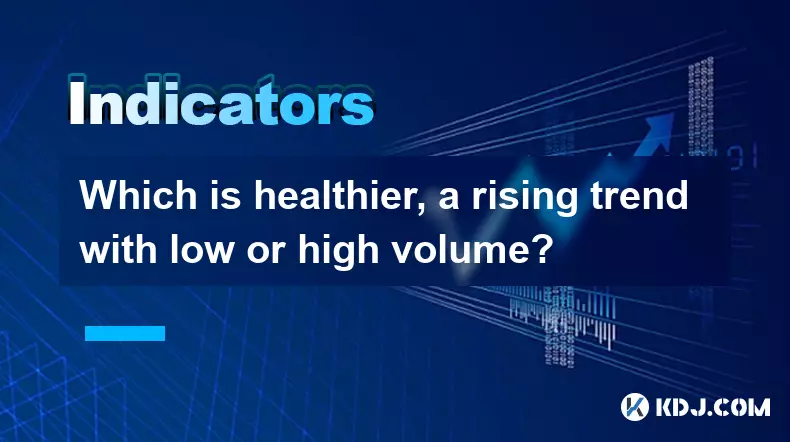
Which is healthier, a rising trend with low or high volume?
Sep 09,2025 at 04:00pm
Understanding Volume in Market Trends1. Volume serves as a critical indicator when analyzing the strength of a rising trend in cryptocurrency markets....
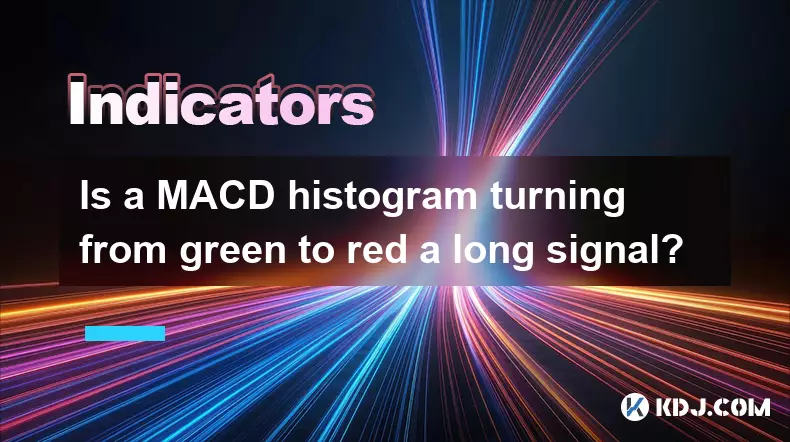
Is a MACD histogram turning from green to red a long signal?
Sep 09,2025 at 01:54pm
Understanding the MACD Histogram in Crypto Trading1. The MACD (Moving Average Convergence Divergence) histogram is a visual representation of the diff...
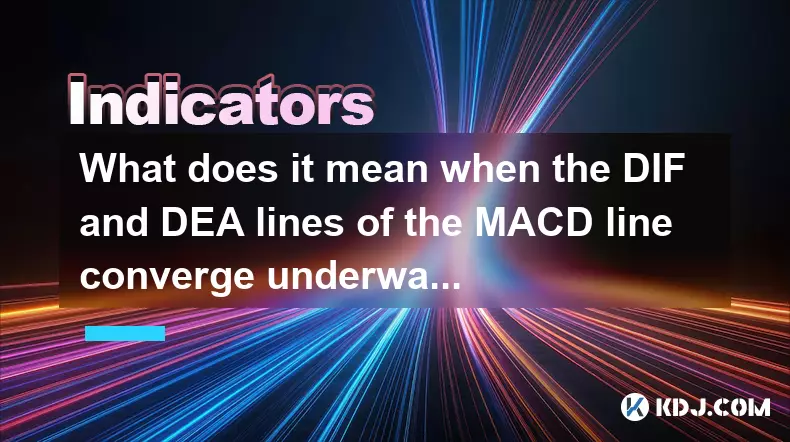
What does it mean when the DIF and DEA lines of the MACD line converge underwater?
Sep 09,2025 at 07:55am
Understanding MACD Components in Bearish Territory1. The MACD indicator consists of three elements: the DIF (Difference), DEA (Signal line), and the M...
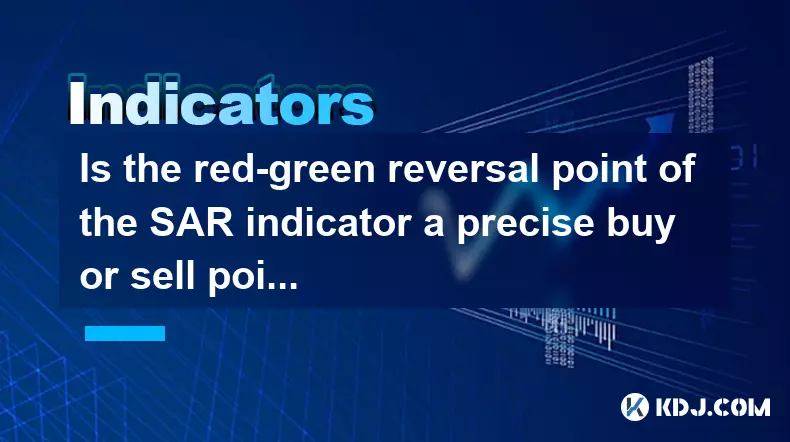
Is the red-green reversal point of the SAR indicator a precise buy or sell point?
Sep 09,2025 at 11:18am
Understanding the SAR Indicator in Cryptocurrency TradingThe SAR (Stop and Reverse) indicator, developed by J. Welles Wilder Jr., is a popular tool us...
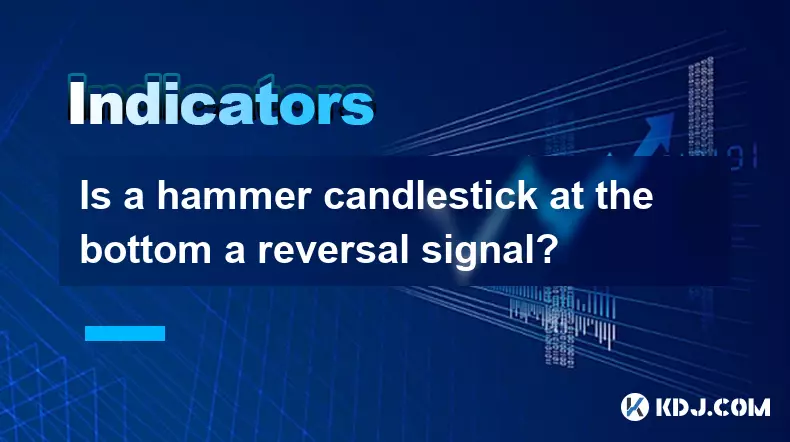
Is a hammer candlestick at the bottom a reversal signal?
Sep 10,2025 at 01:01am
Understanding the Hammer Candlestick Pattern1. The hammer candlestick is a single-candle formation that typically appears at the end of a downtrend. I...

Is the RSI entering the oversold zone a golden signal for buying the dip?
Sep 09,2025 at 02:55pm
Understanding the RSI and Its Role in Crypto Trading1. The Relative Strength Index (RSI) is a momentum oscillator widely used in the cryptocurrency ma...

Which is healthier, a rising trend with low or high volume?
Sep 09,2025 at 04:00pm
Understanding Volume in Market Trends1. Volume serves as a critical indicator when analyzing the strength of a rising trend in cryptocurrency markets....

Is a MACD histogram turning from green to red a long signal?
Sep 09,2025 at 01:54pm
Understanding the MACD Histogram in Crypto Trading1. The MACD (Moving Average Convergence Divergence) histogram is a visual representation of the diff...

What does it mean when the DIF and DEA lines of the MACD line converge underwater?
Sep 09,2025 at 07:55am
Understanding MACD Components in Bearish Territory1. The MACD indicator consists of three elements: the DIF (Difference), DEA (Signal line), and the M...

Is the red-green reversal point of the SAR indicator a precise buy or sell point?
Sep 09,2025 at 11:18am
Understanding the SAR Indicator in Cryptocurrency TradingThe SAR (Stop and Reverse) indicator, developed by J. Welles Wilder Jr., is a popular tool us...

Is a hammer candlestick at the bottom a reversal signal?
Sep 10,2025 at 01:01am
Understanding the Hammer Candlestick Pattern1. The hammer candlestick is a single-candle formation that typically appears at the end of a downtrend. I...
See all articles
























































































